#ancient mediterranean
Text

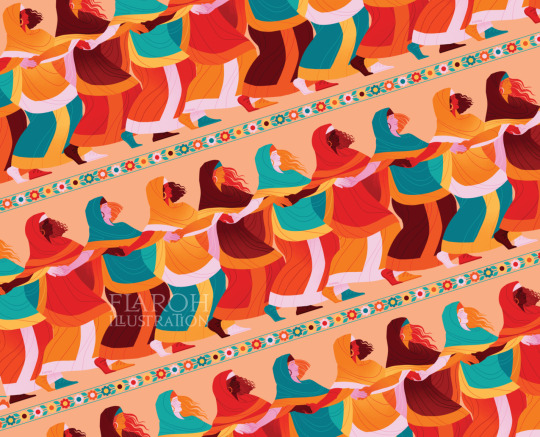
Dancing through the eras ✨👭🏺
Happy #WomensEqualityDay everyone!🧡 Today I'm thinking of all the women of the Ancient Mediterranean, whose lives and dreams we still continue to learn about today with every discovery✨
#womens equality day#magna grecia#tagamemnon#flaroh illustration#ancient history#art history#ancient greece#greek mythology#ancient mediterranean#tomb of the dancers
444 notes
·
View notes
Text

Shootout to the ancient d20s I saw at the Met the other day.
#196#my thougts#my photos#d20#dnd dice#polyhedral dice#handmade dice#dice#ttrpg community#ttrpg#dnd#dungeons and dragons#ancient greek#ancient history#ancient greece#art history#ancient Mediterranean#archeology#hellenic civilization
61 notes
·
View notes
Text

Marble sarcophagus lid of a possible priestess, Carthage, c. 400-300 b.c.
#north africa#mediterranean#ancient mediterranean#tunisia#carthage#sarcophagus#history#priestess#winged lady
88 notes
·
View notes
Text
https://vrallart.com/vr-exhibitions/em/intermedit_project/
Do you have virtual reality glasses? You'll be able to visit the 3D exhibition "The Mediterranean Exchange in Antiquity", where you'll be able to step inside the reconstruction of the Ancient Greek city of Emporion (modern-day Empúries, Catalonia), Punic archaeological sites in Eivissa (Balearic Islands), and the Roman oppidum of Ensérune (Occitania). You can also see 3D scans of archaeological objects found in all these places.
#archaeology#empúries#eivissa#arqueologia#ancient mediterranean#ancient history#virtual reality#museums#archeology
48 notes
·
View notes
Note
You reminded me that Romans likely knew how to do varicose vein surgery, based on letters of the time. It’s insane what Ancient Mediterraneans knew of human health! Have a good day!!
Amazing! They never cease to impress us!
12 notes
·
View notes
Text
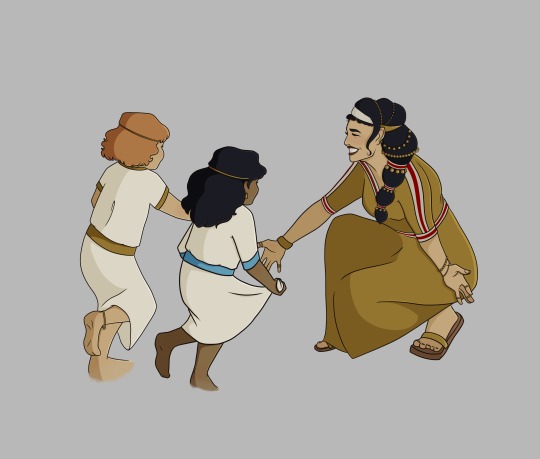
Click for better quality
Leda (without swan zeus) for @the-purrletarian! I hope you like it!
Leda’s clothing and jewelry were based on two ancient frescos, “Mycenaean Lady” and “Ladies in Blue”
#obviously i couldnt resist adding Helen and Klytemnestra#my beloveds#my art#myart#artists on tumblr#artistsontumblr#fanart#art#fan art#greekmythology#ancient greece#leda#helen#helen of troy#helen of sparta#klytemnestra#clytemnestra#tagamemnon#classics#ancient mediterranean#the iliad
80 notes
·
View notes
Text
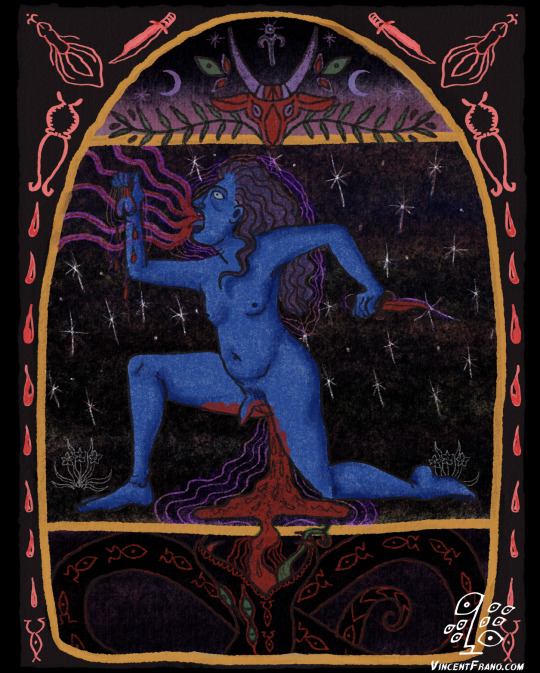
For as long as I can remember, gender has felt ambiguous within this body. As a child I learned — from a book about bones — how the Biblical story of Adam and Eve has led some to believe that males have one fewer rib than females (on account of Eve being made from one of Adam’s ribs). This fascinated me, so I would lie awake at night trying to count my ribs to find out if I was a boy or a girl — surely the skeleton cannot lie, I thought. Invariably I always lost count, left frustrated that I would never know the truth of my gender. Beyond my own questioning, others have inquired about my gender since birth. From an ambiguous birth name to androgynous features, being asked “are you a boy or a girl?” began long before I even knew about gender variance and what it is to be transgender or third gender.
As I’ve told in Spirits We Are, I identify as part of a collective being: the product of trauma and a thread connected to our ancestors. This experience of multiplicity and ancestral connection has everything to do with our shared and individual relationships to gender and the body. As we’ve begun the process of healing within, I’ve simultaneously been on a journey to rediscover the queer history of my ancestors. My twin spirit has been my primary guide on this exploration, as they are the one tied to our ancestors most deeply. They expressed clearly our ancestral connection to persons with male genitalia who would partially or fully castrate themselves, whip their bodies to bleed, dancing ecstatically to tambourines and the clashing of knives. In time, I was able to uncover a name for these people: the Galli.
The Galli were just one of several spiritually connected gender variant peoples in the ancient Mediterranean world. Throughout the region male, female, and intersex bodied people (male-bodied being most written about) would take on the role of the opposite sex or a third gender for cultural and spiritual purposes. Only a few of these variant identities continue to exist in some form today, many having been erased with the expansion of Abrahamic religions. The Feminnielli of Naples, Italy is one such identity which traces their origins back to the Galli and the cult of Cybele.
Discovering that my ancestors have an ancient heritage of gender variance felt like opening a door I had been unable to see, but knew must exist. It was an even greater feeling of comfort to see my experience of gender reflected in people living today in the land of my ancestors — a rare vestige of an ancient cultural gender identity. Although my body’s ancestry and our ancestral connections do come, in part, from Southern Italy — because I am third generation, raised in the United States, I feel it is not my place to claim a cultural identity as Feminniello. Instead I claim an identity of third gender, as this reflects a generic cultural gender identity, something more specific than non-binary or gender variant. The cultural piece — though diasporic — is significant for me and for us as a collective. For us, gender has ceased to be an individual matter — it’s connected to ancestral spirits and to the very fabric of our spiritual beliefs. It is not so much a personal desire to be between as it is a duty to our ancestors. This life does not belong to one person. This life begs to remember for our descendants what our ancestors were forced to forget.
This month is LGBTQ+ Pride Month in the US and in sharing this I wish to express a sort of pride for a gender experience that isn’t often mentioned in the European-American cultures. Our collective roots have been cut so long ago that many have forgotten the tap root we all once shared, now that we are left with thin fibers tangled at the surface. But some of us are compelled to dive deep into the soil, to recover the withered remains of that deep wellspring of culture that recognized (imperfectly) the varied genders of humanity within Europe. Perhaps, if enough of us can twine our roots together, regrowth and renewal can come forth; opening the way for healing within and between cultures. Perhaps, in reviving our queer ancestors we can provide foundations for our queer descendants to grow upon. For this some of us must find our genders in the past — digging in the dark recesses to recover the blood an bone — while others must find them in the present or future. Many strands wound together become stronger than a single thread can ever be.
Can you imagine my excitement, then, to learn about a documentary on self-discovery and the Feminniello called Summer Within? Here is another descendant from Southern Italy, also raised in the United States, who is seeking connection to their queer ancestors and modern people whose gender exists between. Once again I felt a sense of reflection and relation. Though our paths and stories are vastly different, we share a commonality; we walk parallel to each other on the margins.
The digging into the deep recesses has felt like my/our path. As we explore our ancestral connections to spirit and gender, the distinction between “self” and “other” becomes increasingly blurred. To be trans and third gender in this life is not just about a desire to be a singular “me” — it is about being someone my great-great-great-great grandmother could not be. It’s about healing the misogyny of many generations of grandfathers. It’s about reviving ancient ways that my blood and bone hold memories of. It’s a way to honor the mother-fathers of the deep past where words no longer hold meaning. It’s about living for those who came before us and those who will come after us. It’s about the thread that ties us to the spirits of our ancestors and the old gods the once called by name. It’s about honoring this life as a gift, even when that gift is named a curse by the society we live in.
What more can we do — those of us who are queer by label or identity — than exist, live, breathe, love, and sing as we are. So that we may reflect in each other’s eyes and feel a sense of momentary belonging. There are some of us who must be seen in order to speak to the hidden ones, “you are never alone”. With such variety of human experience — of gendered experience — there must be such a kaleidoscope of bodies existing in the glorious light of day and glistening in full moon light.
FROM OUR SKETCH BLOG
#third gender#third gender artist#galli#gallus#cybele#kybele#cult of attis#attis#Feminnielli#Feminniello#queer history#ancient queer history#ancient roman#ancient greece#ancient mediterranean#mediterranean#art#artist#journal#multiple#multiplicity#plural#plural artist#plural art#autistic artist#neurodivergent artist#trans artist#queer artist#lgbtq#lgbtqia
7 notes
·
View notes
Photo

#history#ancient history#humanities#the humanities#sumer#ancient sumer#sumerians#sumerian memes#ancient mediterranean#mediterranean#mediterranea#funny#meme#joke#humor#lol#memes#warfare#cuneiform#inanna#had to do it to em#evil eye#ancient gods#tumblr#ancient world#dark academia#academia#school#hehe
63 notes
·
View notes
Text
Temple of Amun-Re and Hypostyle Hall

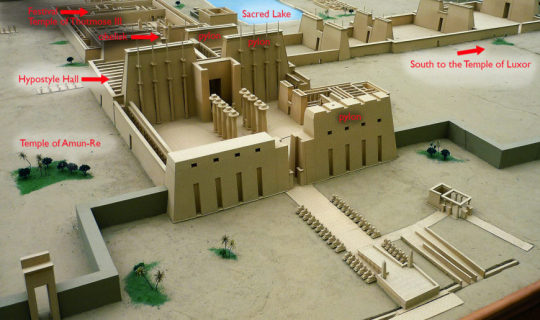

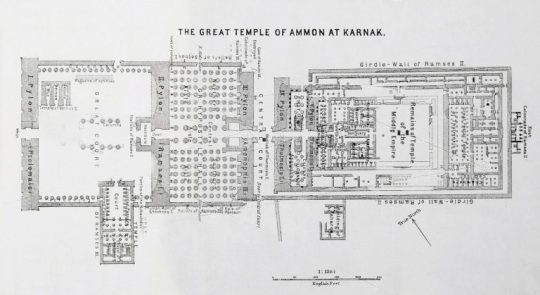
Karnak, Egypt
New Kingdom Egypt (Ancient Near East)
1550 BCE (temple) 1250 BCE (hall)
Cut sandstone and mud brick
Form: Combining the land from all components of this site, it spans more than 200 acres. The sacred area enclosed to honor Amun is 61 acres all by itself, and the hypostyle hall is 54,000 square feet (making it the largest singular room of any religious building in the world to this day) and is filled with 134 columns. The inside of the temple was originally brightly painted
Content: Inside of the temple, the main path through the center slowly raises the deeper inside the building it gets. The columns inside the hall have shallow reliefs carved into them and depict creation stories, as well as symbols of paradise (lotus, palm plants, papyrus). The roof/ceiling would have been decorated with images of stars, the sky, and birds.
Context: In ancient Egypt, it was believed that at the end of agricultural season, the gods and earth were left exhausted. Because of this, it was necessary to help replenish their energy by participating in the Opet festival. The Opet festival lasted for 27 days, starting at the Temple of Amun-Re and the Hypostyle Hall, and ending 1 and a half miles south. This celebration also strengthened the link between a pharaoh and Amun. Accessibility to the deeper parts of the temple became more and more restrictive with each pylon (see image 2), as a means to show the higher social class was closer to god. However, the deepest part of the temple was restricted to priests and the pharaoh exclusively. The temple and hall were a pilgrimage site for over 2,000 years.
Function: While the religious ritual practices at this site serve as its main function, the temples also represented the creation of the world as the Egyptians believed it. It was believed that the world was originally only water, and that the first solid land to emerge from the water was a pyramid-like mound, also known as a benben. The structure of the temples were shaped in this way as well, so when the Nile flooded, it would seem even more like the original mound of creation.
sources:
khan academy
#ap art history#ancient mediterranean#ancient egypt#ritual#power and authority#sacred space#narrative#architecture#relief sculpture#temple of amun re#hypostyle hall
6 notes
·
View notes
Text
me: it’s just gonna be a short one act adaptation of book one of the iliad! nothing crazy!
also me: reads a 127 page journal as research, comes up with multiple original characters, arcs and original plot lines for each, changes a major plot point
#it’s for the female agency#the iliad#the classics#ancient mediterranean#homer#the greeks#briseis and chryseis deserve better ok i’m giving them their best lives
2 notes
·
View notes
Text
According to NBC here in the US, the missing titanic sub has been found. As debris. Off the bow of the Titanic wreckage.
And it looks like the sub suffered what we all suspected, and what was undoubtedly the more merciful of the two options: a catastrophic implosion from the pressure.
Also, more info has come to light about the fishing trawler with the hundreds of migrants that sank cataclysmically off the coast of Greece, indicating that the greek coast guard knew about the vessel AND how much trouble the vessel was in, and were towing it at a speed that made it capsize, at which point they unhooked the tow line and watched the trawler sink without helping the passengers to safety. Despite a bunch of other ships trying to help as well throughout the whole ordeal.
So a lot of people are dead, all because of regulations (and the lack thereof) regarding sea-faring vessels and rescue protocols. People shouldnt be allowed to make a business charging a ton of money for a ride on an uncertified, unsafe, un-seaworthy ship going deep into the ocean with no distress beacon or tether to the mothership. People also shouldnt be allowed to enact laws that criminalize the ferrying of refugees, which then force the refugees to hitch rides on fishing trawlers, and which also prevent people from helping those fishing trawlers full of refugees due to fear of legal consequences.
Hopefully BOTH of these events spark changes on an international scale in terms of what is legally allowed to be sailed, who is legally allowed to be the passengers, and what the rescue protocols are in the event of disaster for any seafaring vessel, illegal or not. It shouldnt be just the global 1% who get 24/7 search parties and remote-operated submersibles helping rescue them.
#the question of 'what do we owe to each other' can be answered simply with 'the dignity of retrieving our remains when we die'#another answer is 'the dignity of thinking about each other fellow humans with similar motivations and feelings'#also 'stopping someones potentially self-destructive behaviors just because theyre rich and want to feel special'#also i feel like humans have been sailing the seas long enough that it should be guaranteed that people will survive sea voyages#im very mad about specifically mediterranean maritime disasters because we have ancient writing saying they made it safe#sailing from Egypt to Greece was so old hat and safe that people legit took the ancient equivalent of cruises back and forth#cleopatra habitually sailed from alexandria to rome with a ton of ships and was fine#Nero tried to have his mother drowned at sea by orchestrating a dramatic shipwreck while she was our sailing AND SHE SURVIVED#and then swam to shore got back to rome and whooped his ass#fuckin pliny the elder tried to evacuate people from pompeii and the surrounding coast villages when vesuvius erupted#and he actually WAS able to rescue people#but he himself had an asthma attack from the fumes which led to a heart attack and he died on the beach#there is legit no excuse for that trawler of migrant refugees to have wrecked#negligence all around#anyway#oceangate
12K notes
·
View notes
Photo
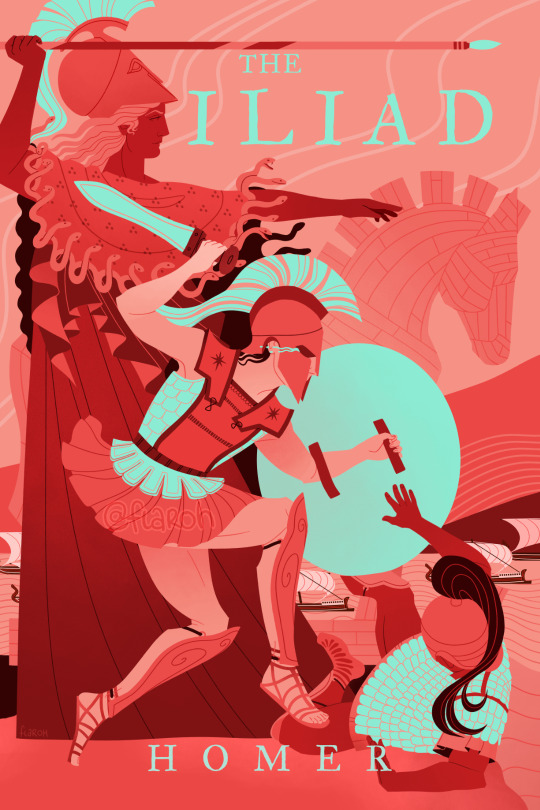


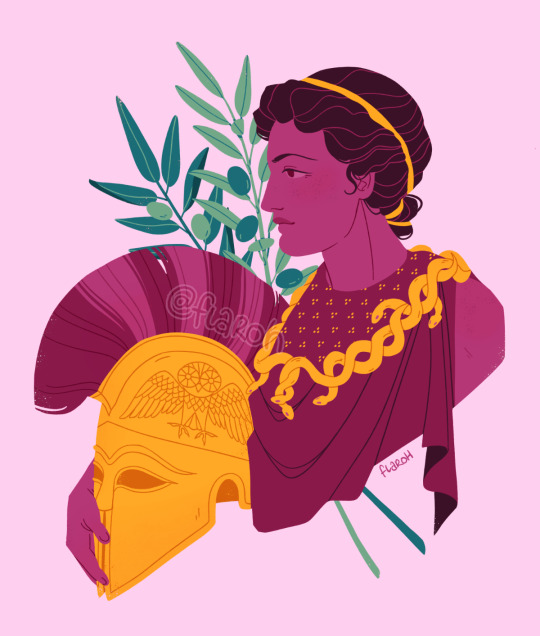
Hiya everyone! I'm Flora, a freelance artist specialising in vibrant illustrations of the ancient Mediterranean world 🏺🏛️🌞
📜 [email protected]
🌿 Portfolio
🌿 Patreon
🌿 Merch

#tagamemnon#ancient greece#greek mythology#ancient rome#Roman history#the iliad#pompeii#archaeology#greek archaeology#dark academia#classical studies#ancient mediterranean#classical academia#flaroh illustration
560 notes
·
View notes
Text
Its name, which literally translates to “Paul’s Stone,” is directly related to St. Peter and St. Paul. The city’s long history, however, stretches nearly five thousand years back into antiquity since the broader region was known to have been inhabited during the earliest years of Greek history.
The city is too old to be a Mycenaean-era city. Pavlopetri was initially inhabited in 2800 BC after elements dating back to the Bronze age were found and identified. This may represent one of the first “planned” cities—with residential neighborhoods, administrative buildings, factories for the production of pottery, markets, etc.
Researchers believe the city was submerged after a series of three cataclysmic earthquakes occurred in the area around 1000 BC.
#history#archeology#archeologicalsite#discovery#ancient greek#underwater city#ancient city#ancient#preserved#ancient mediterranean
0 notes
Text

Keftiu (Minoan, Cretan, later Mycenaean) men depicted bringing tribute within the tomb chapel of the vizier Rekhmire (TT100).
New Kingdom, 18th Dynasty, reign of Thutmose III - Amenhotep II, c. 1479-1400 B.C.
Valley of the Nobles, Theban Necropolis
Photograph by manna4u
http://facebook.com/Egypt.Museum
#ancient egypt#minoan#mycenaean#crete#ancient crete#cretan#ancient mediterranean#eastern mediterranean#mediterranean#ancient trade#history#egypt
58 notes
·
View notes
Text

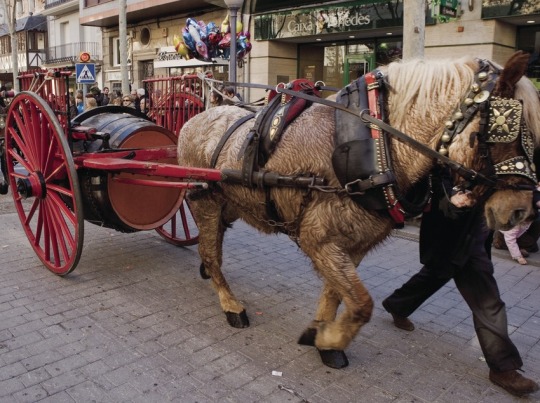


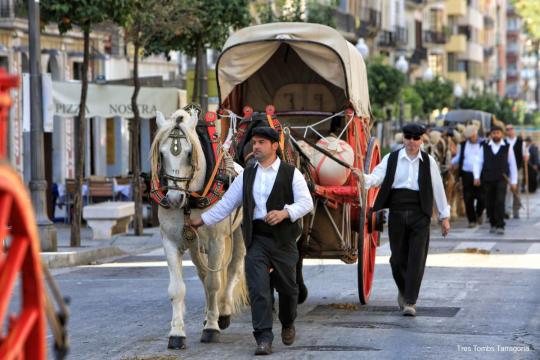
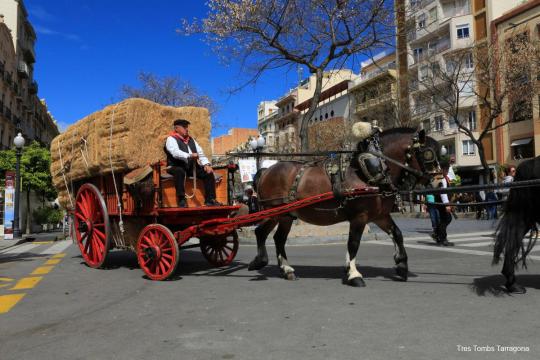






Around the day of Sant Antoni (January 17th), many towns and cities in Catalonia celebrate the festivity of els Tres Tombs, ("the three laps" or "the three turns").
Traditionally, on this day the muleteers and farmers brought their carts and animals to be blessed, since Saint Anthony is the patron saint of domestic animals, muleteers and vehicles. Nowadays, people don't work in the countryside with animals anymore, so the parade consists of old wagons that recall the old trades of the town. Carts and horses go around the city centre three times (that's why it's called "the three laps") to receive the blessing. Some people also bring their pets to be blessed.
It might seem like a Catholic festivity -after all, it became one-, but the origins are found in pagan traditions of pre-Christian times. The ritual of going around a temple to receive a blessing was already done in different Ancient Mediterranean cultures. The Romans walked in circles around a temple to be favoured by the gods, and this passed on to some Catholic traditions of walking around a saint's relic that continue to be done nowadays. It's believed that this practice is related to the Muslim religious ceremony of doing seven laps around the Ka'ba, which ancient Arabs venerated since pre-Islamic times.
In the els Tres Tombs parade, the animals' welfare is taken into account and protected by law. There must be veterinarians who certify the animals' well-being before, during and after the parade, and the marching bands and drummers have to be located in a separate part of the parade so that it won't be too loud for the horses.
Photos in this post were taken in the following cities: Igualada, posted by catalunya.com; Tarragona, by Tarragona Turisme and Gremi de pagesos; Sant Andreu del Palomar, by Tot Barcelona; Cerdanyola del Vallès, by Tot Cerdanyola; Valls, by Experiències rurals; and Vilanova i la Geltrú, by El món els espera. Historical information source: Roger Costa for Sàpiens.
#tradicions#els tres tombs#tres tombs#sant antoni#catalunya#història#cultures#culture#traditions#wagons#horses#saint anthony#ancient rome#ancient mediterranean#igualada#tarragona#sant andreu del palomar#cerdanyola del vallès#vilanova i la geltrú#valls
57 notes
·
View notes
Text

The City of Troy from the Sea by François-Louis Schmied
#françois louis schmied#art#city#troy#sea#odyssey#the odyssey#homer#the iliad#iliad#europe#european#history#trojan#greek#greece#ancient greece#ancient greek#mediterranean#classical#antiquity#ancient#architecture
3K notes
·
View notes